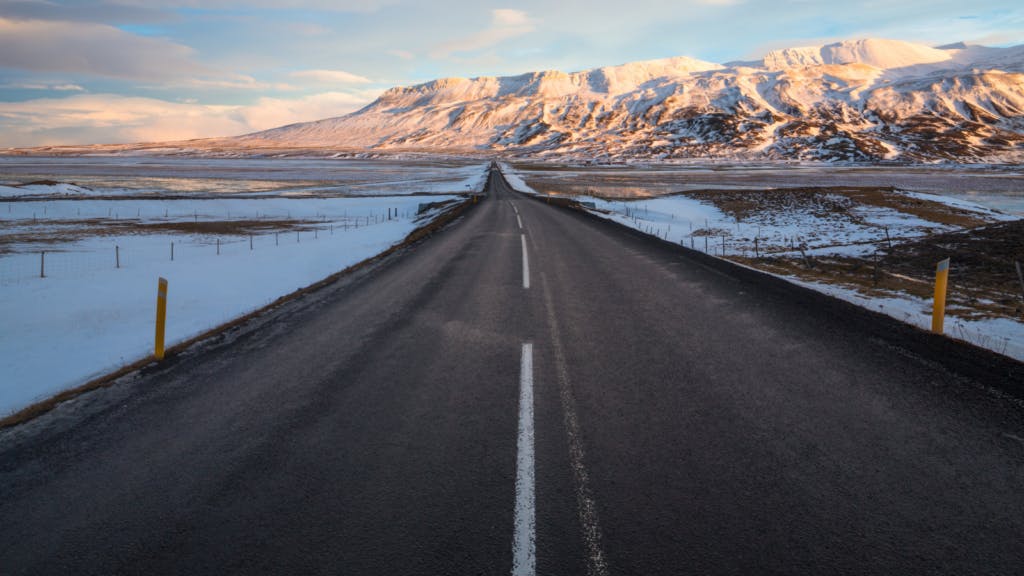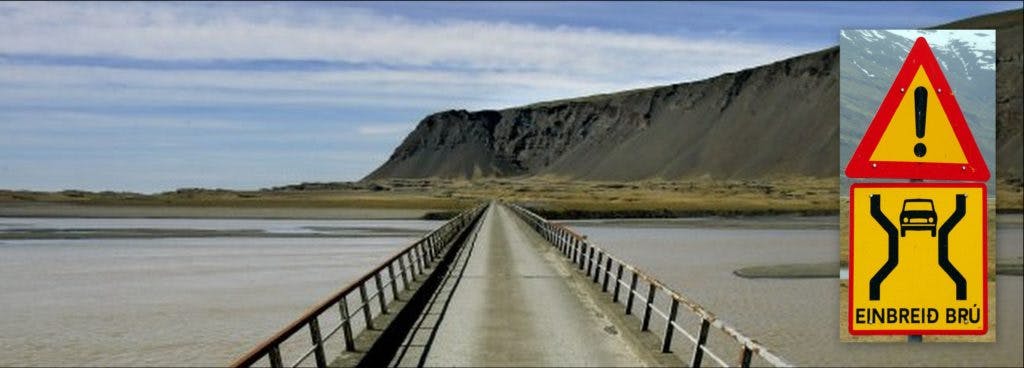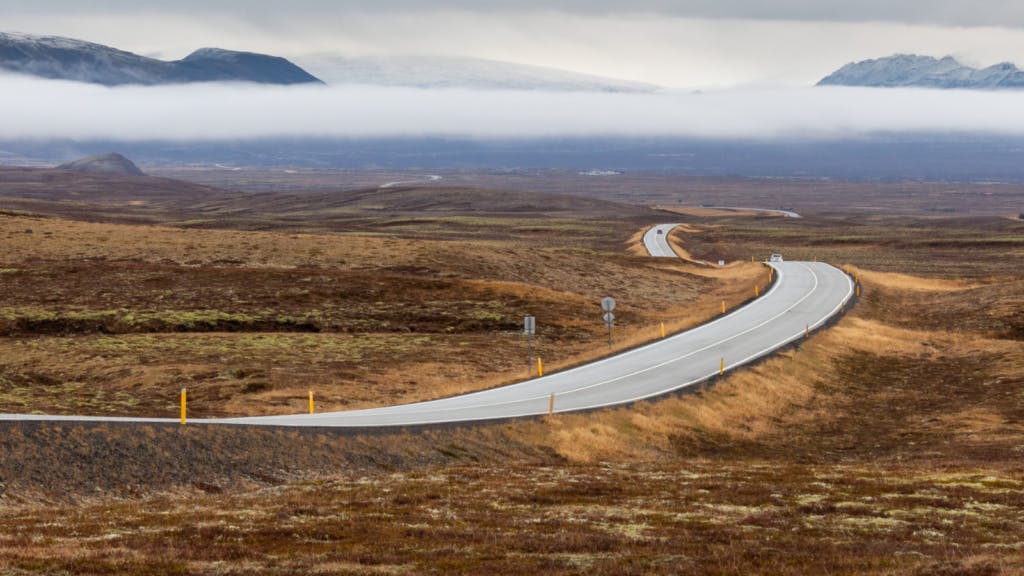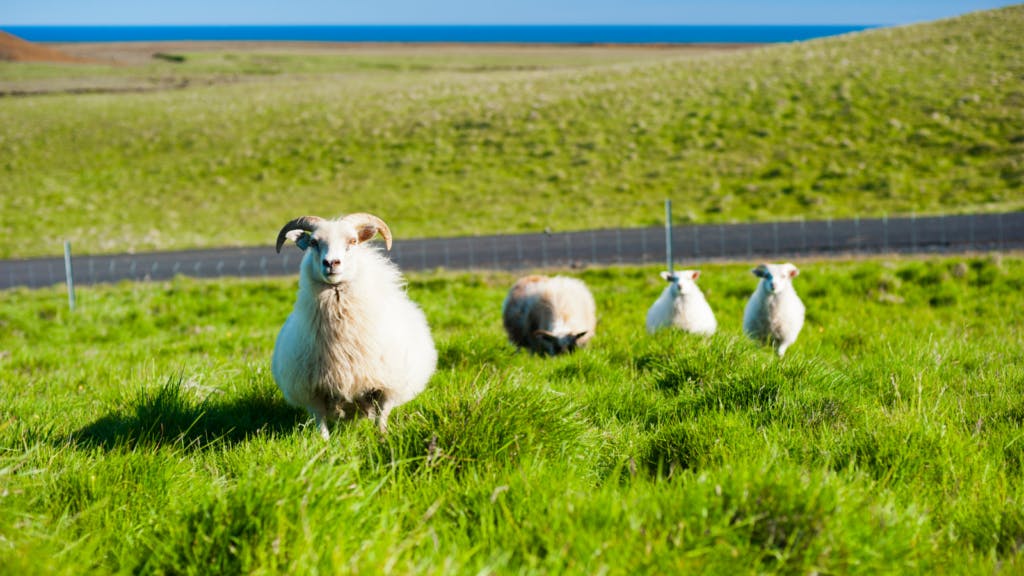Loading...
October 29, 2025
Discover The Ring Road
When planning a trip to Iceland, you will encounter the name “The Ring Road” often. But what is it? It’s Iceland’s “highway”, the main road that goes all the way around the country (except for the Westfjords and Snæfellsnes peninsula).
The Ring Road has a few names like Route 1, Highway 1, or Road No. 1. The Icelanders call it Hringvegurinn which literally means the Ring Road. It’s also locally called Þjóðvegurinn, the national road.
How long does the Ring Road take?
The Ring Road is approximately 1,332 km/ (828 miles) and in theory, could be driven in 20 hours. This is a stunningly short time considering you’re driving around the whole country! However, this would not be doing Iceland justice. There are countless must-see attractions around the country that the Ring Road encompasses, which is the benefit of the road.

Which way to drive the Ring Road?
The biggest question when driving the Ring Road is: Should one drive it clockwise or anti-clockwise? There is no right or wrong answer here. It all depends on what you want to see the most and how you want to experience it. There is one factor you should consider before embarking on your road trip and that is the weather. Get the latest forecast and base your decision on that. If there is rain on the south side of the country, head north, and vice versa. If the whole of Iceland is sunny, toss a coin!
When to drive the Ring Road?
The biggest deciding factor on when to drive the Ring Road is the hours of the day. Daylight hours are much more plentiful in the summer months, with the added wonder of the Midnight Sun. In Iceland, the sun can set early in the afternoon, making driving on the open road a little less enjoyable. That is not to say that driving in Iceland’s winter is impossible - it brings its own advantages, such as the chance to spot the Northern Lights on your travels!
Read more: A beginner’s guide to Iceland
Practical tips for driving the Ring road
Here are some things you need to know when driving Iceland’s Ring Road.
Single-lane bridges
Roads in Iceland are usually narrower than visitors expect, with very few hard shoulders to speak of. This means that careful driving is absolutely essential, and our speed limits are famously low (and strict). What’s more, an oddity of our main roads is single-lane bridges, with no signs to indicate priority. The priority typically goes to the vehicle closest to the bridge. Cross these carefully and slowly to prevent accidents.
Well before the bridge entrance, you will have enough space to stop on your right-hand side to give way to the oncoming traffic to pass you safely. When you have stopped securely on your right-hand side, you may even blink with your headlights to show the car on the other side that it’s safe to pass the bridge. Many accidents happen at single-lane bridges when people blindly drive over them without considering possible oncoming traffic.

Single-lane tunnels
There are not many single-lane tunnels along the Ring road but you will find them in the East and the Westfjords. Before entering a single-lane tunnel, there will be clear signs. The sign will indicate who has right of way, with shoulders at regular intervals to allow the priority direction to pass. If the arrow on the right side is white, the oncoming traffic has to yield to you. But as always, drive with caution and be aware of oncoming traffic.

Note blind rises
Another road feature that is quite common in Iceland is a blind rise, or Blindhæð as the Icelanders say. They are more common on smaller roads than on the Ring Road. A blind rise is a slight hill that restricts your visibility ahead, meaning you will not see if there is oncoming traffic on the other side of the hill. These require you to slow down to make sure you can react to anything on the other side of the rise.
At times a blind rise will be divided with a traffic sign to separate the two lanes. As always, drive carefully and make sure you are not driving faster than the road, visibility, or your experience allows.
Be careful of mountain passes
When driving the Ring Road off-season, one has to prepare for delays in the form of mountain passes. These might be icy or even snowed in if the weather turns. It’s important to always be on top of the weather in Iceland, especially in the winter months when it can change so fast, as mountain roads can become impassable within an hour. If it is snowing while on your Iceland trip, it’s a good idea to let the hotel know where you are heading, what route you are taking, and when you are expecting to arrive at your new destination. As usual, drive with care and you will not have any problems at all.
Read more: Learn more about driving in Iceland

Beware of sheep and horses
Icelandic sheep roam around the country free during the summer. You will find them grazing just about anywhere or licking salt off the roads. Sheep are unpredictable animals and are not the sharpest tools in the shed. When you see sheep along or on the road, slow down. Don’t expect them to just run away from you. They can come out from nowhere so be prepared to hit the breaks if that is the case. If you do collide with a sheep, you are responsible and might be forced to pay for the loss to the owner.
Iceland’s horses don't enjoy the same freedom as its sheep but can pose a problem on the road. Horse owners and riders sometimes travel in large groups but it’s rare to see them on the Ring Road. If this does happen, show the horses respect and slow down, almost to a halt, when you pass them. They easily scare and might cause injury to themselves, the riders, and even your Iceland rental car.
Never stop on the road
One type of behavior that has increased tremendously is tourists (and Icelanders at times) stopping in the middle of the road. Stopping on the road can put so many others in danger and in fact, in 2016, we had a fatal accident that was due to stopping “in the middle of the road”. Please choose your stops wisely and consider other drivers.
Turnpikes or toll roads
There are few tolls in Iceland, with ferry rides and the big tunnel just north of Reykjavik called Hvalfjarðargönginn being the only exceptions. The tunnel is part of the Ring road, but by driving around the fjord Hvalfjörður, you can skip the tunnel. Either is a good choice. The tunnel is an engineering marvel and the ride around the fjord is stunning.
Speed cameras
Expect speed cameras all around the country. When you are getting close to a speed camera, there will be a sign notifying you before you pass one. You won’t see any signs when the police are out measuring speed. Fines for speeding are notoriously high, so taking into account the new driving conditions, sheep, single-lane bridges, etc, it is much more prudent and safe to keep the speed limits to avoid any fines.

